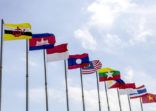In March, the Reserve Bank of India (RBI), the Bank of Thailand (BoT) and the Bank of Korea (BoK) cut their respective key interest rates by 25 basis points each to support economic growth.
“We believe that central banks in India, Thailand and Korea will continue to lean towards looser monetary policies, which should provide support for their respective government bonds,” said Koh Liang Choon, head of fixed income.
In India, the RBI on March 4 slashed the repo rate — the rate at which it lends money to commercial banks — by 25 basis points to 7.5%. This brings the total rate cut to 50 basis points since January.
“Demand for Indian local government bonds will [also] be supported by anticipation of softer inflation as weakness in oil prices persist,” Koh said.
The fall in global crude oil prices has helped India to reduce its domestic inflation and current account deficit.
Moreover, this week the Indian government said the consumer price inflation has eased to 5.17% in March compared to 5.37% in February.
Like Indian, Chinese currencies
In terms of currencies, Nikko prefers Chinese renminbi due to the measures taken by the government to internationalise its currency.
“We believe that one of the priority reform policies is the internationalisation and liberalisation of the RMB [renminbi].
“This will provide ample support for the currency, particularly as China actively lobbies for inclusion of the RMB in the IMF’s Special Drawing Rights.”
According to local reports, the Chinese Premier Li Keqiang has asked the the IMF to include China’s currency in its SDR basket, which is due for review in May.
The SDR is an international reserve asset, created by the IMF in 1969 to supplement its member countries’ official reserves. Its value is based on a basket of four key international currencies – the US dollar, the euro, the pound and the yen.
Koh added that he continues to favour the Indian rupee based on strong economic growth potential and on expectations that the current account deficit will remain well contained by the plunge in the oil prices.
















